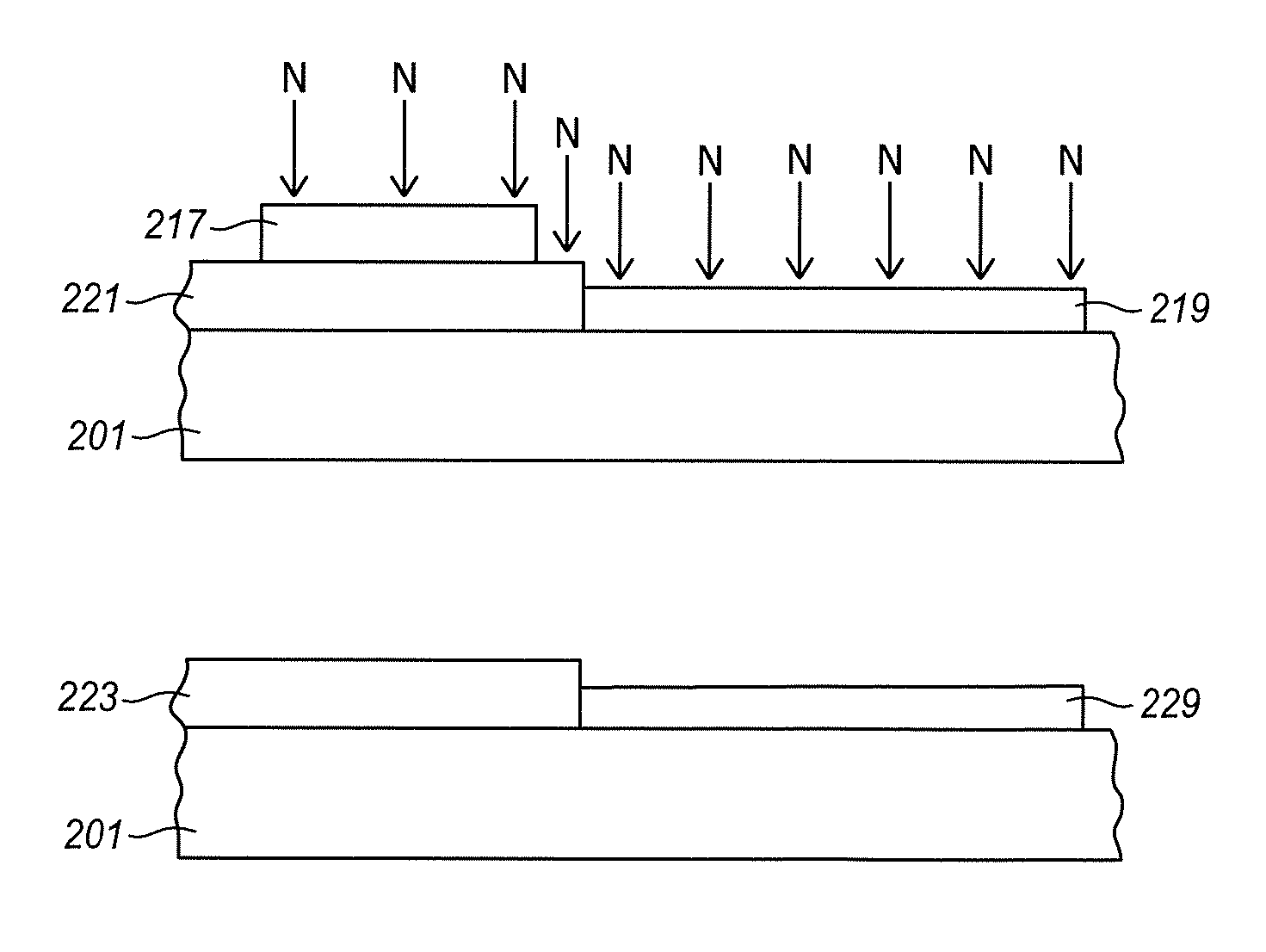Image sensor with reduced noise by blocking nitridation using photoresist
a photoresist and image sensor technology, applied in the field of integrated circuits, can solve the problems of inability to use, inconvenient use, and inability to use, and achieve the effect of reducing the noise of the rts (random telegraph signal) in the sensor array
- Summary
- Abstract
- Description
- Claims
- Application Information
AI Technical Summary
Benefits of technology
Problems solved by technology
Method used
Image
Examples
Embodiment Construction
[0013]Typically, a semiconductor has a gate oxide under the gate electrode of any CMOS transistors. The thickness of the gate oxide is adjusted based on the electrical characteristics that are desired for each transistor. In a pixel circuit, a source-follower transistor, which serves as an amplifier, will have a much thicker gate oxide than many of the other transistors that serve as switches. However, when nitridation is used it is typically applied over the whole silicon wafer surface. As a result, both thin and thick gate oxides are subject to nitridation. However, nitridation may not be needed for all of the gate oxide layers. If, for example, nitridation is used to block the penetration of boron or other dopants through the gate oxide, then it is only needed for thin gate oxide layers. Thick gate oxide layers, commonly used for pixel array amplifiers and for analog circuit elements are much less susceptible to boron penetration.
[0014]Any of the transistor gate oxide layers in t...
PUM
 Login to View More
Login to View More Abstract
Description
Claims
Application Information
 Login to View More
Login to View More - R&D
- Intellectual Property
- Life Sciences
- Materials
- Tech Scout
- Unparalleled Data Quality
- Higher Quality Content
- 60% Fewer Hallucinations
Browse by: Latest US Patents, China's latest patents, Technical Efficacy Thesaurus, Application Domain, Technology Topic, Popular Technical Reports.
© 2025 PatSnap. All rights reserved.Legal|Privacy policy|Modern Slavery Act Transparency Statement|Sitemap|About US| Contact US: help@patsnap.com



